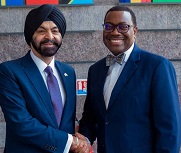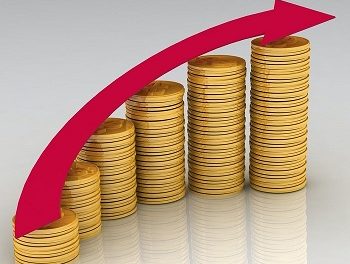
CAVEMA joins fight for food security

(From left to right) Jake Jacobs, deputy chairman of CAVEMA Fishing, Nicky Entin, operation and management officer and Robert Shimooshili, head of operations and HR at CAVEMA.
“There is no such thing as damaged fish. The thing is, within the vessel you might need a certain size of fish e.g. 20+, 18+ and 16+. Then 14+ is not needed and the rest can be taken for fish meal. Or, another thing is that for quality in terms of the international market, they don’t take fish that have wounds for instance,” said Robert Shimooshili, head of operations and HR at CAVEMA Fishing.
He said if the fish is damaged by pressure or anything else the mainstream market will not accept any of it. But he explained that in fishermen’s language there are two different kinds of fish, 1st grade fish which can be sold at an international level and 2nd grade fish which is not entertained by this market.
“And these 2nd grade fish are processed within another vessel as fish meal and sold on the international market be it to Europe or Asia, but our vessel doesn’t produce that one and has the capacity to accommodate all the fish that come on board. Now, we used to sell that fish to another company and we later realised that that fish was fit for human consumption, and we took it, we tested it and the people are now enjoying it,” he said.
Shimooshili said because the product was so cheap in the beginning, the residents bought it in bulk to resell it. But CAVEMA adjusted the prices a bit to avoid that scenario repeating itself and also limited sales to two boxes per person.
“The purpose is to support food security and to promote fish production. And we are trying to sell it at half the price and it’s going very well, people are buying and we limit it to two boxes per person. And we sell like ±200 to 300 boxes in just two days. And these are 2nd grade fish, not broken fish,” he said.
The name CAVEMA derives from four different companies, which are all shareholders in the operating entity. CA, stands for Camuposatu Investments, VE stands for Vernier Investments, the M stands for Mare and the A for Altemar which is the financial partner and has 34% shareholding in the company.
The company is owned jointly by Camuposatu Investments with 26%, Vernier 26%, Marias 14%, Marias and Altemar 34%.
“Marias, Vernier and Camoposatum are all Namibian companies, which means that Namibians have got 66% within CAVEMA and the foreigners have 34%. However, we made it clear in the agreement that once the loan is paid off within the six years to come, starting this year, we will buy the foreigners out, unless we are not able to. But that option is first given to us,” he said.
The company invested N$75million in the acquisition of its offshore processing fishing vessel, the Flipper 9 with a holding capacity of 1,600 tonnes.
The crew consists of 38 Namibians and 23 foreigners. The management is 100% Namibian.
“Last year we were having two vessels, one which caught fish for Vernier and the other for Camuposatu. The total number of employees in both vessels amounted to 38. And its unfortunate that these vessels do not carry a lot of people and they can only carry 45 or so people. And we decided to keep the 38 Namibian crew members, and because it’s a foreign vessel which we bought from outside, we have 24 foreign crew members. And that is the direct employment we gave so far. In addition to that the office staff complements that number with another 45 employees. And that is basically CAVEMA,” he said.
Shimooshili said the future plan of the company is to support onshore processing as it has two advantages within the society, first it creates employment and secondly it adds value to that particular product.
“Our vessels have a system where they regenerate dirty sea water, and can bring fresh horse-mackerel on shore and then it can be processed here. So our future plan is to have a factory where we can process the horse-mackerel here, to create more jobs and not only process the horse-mackerel offshore. By doing that, we will be able to pack the fish into different quantities starting from 1kg, 2kg, 5kg, 10kg and so forth” he said.
He further said the general challenge at the moment is the market. Currently Namibian horse mackerel is moving to western and central Africa with the DRC the main consumer. The inability of this market to pay higher prices, forces the price down. The second challenge is financing, like in having big vessels to bring these fish ashore.
“It needs to dock to the jetty, however the sea is too shallow in that area. The vessel can not come or else it will be grounded. And that’s why [the bottom] needs to be dug out for the jetty to accommodate such a large vessel. And this requires a lot of money. And that is a serious challenge to this type of future emerging plan. One just needs to listen to the vessel and more has to be done in order to realise such future plans,” he added.
“The old players are not welcoming the new players within the industry and this is another challenge. It is for this reason why we keep a low profile because competitors within the industry can destroy one’s reputation,” said Shimooshili.













































